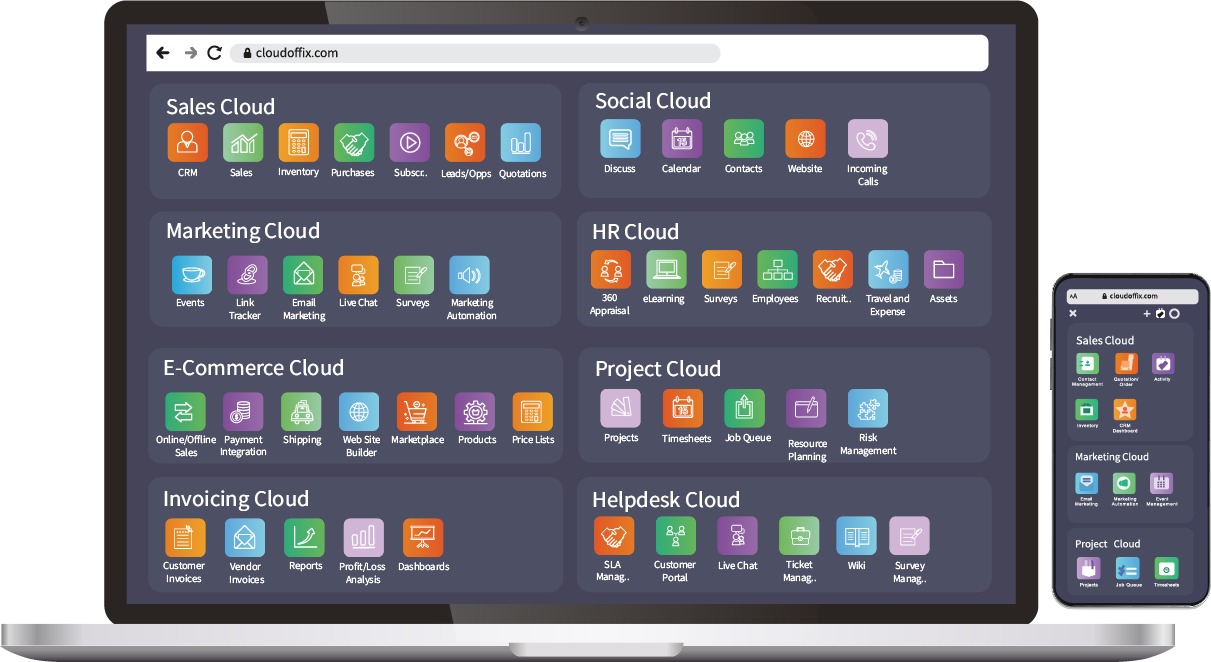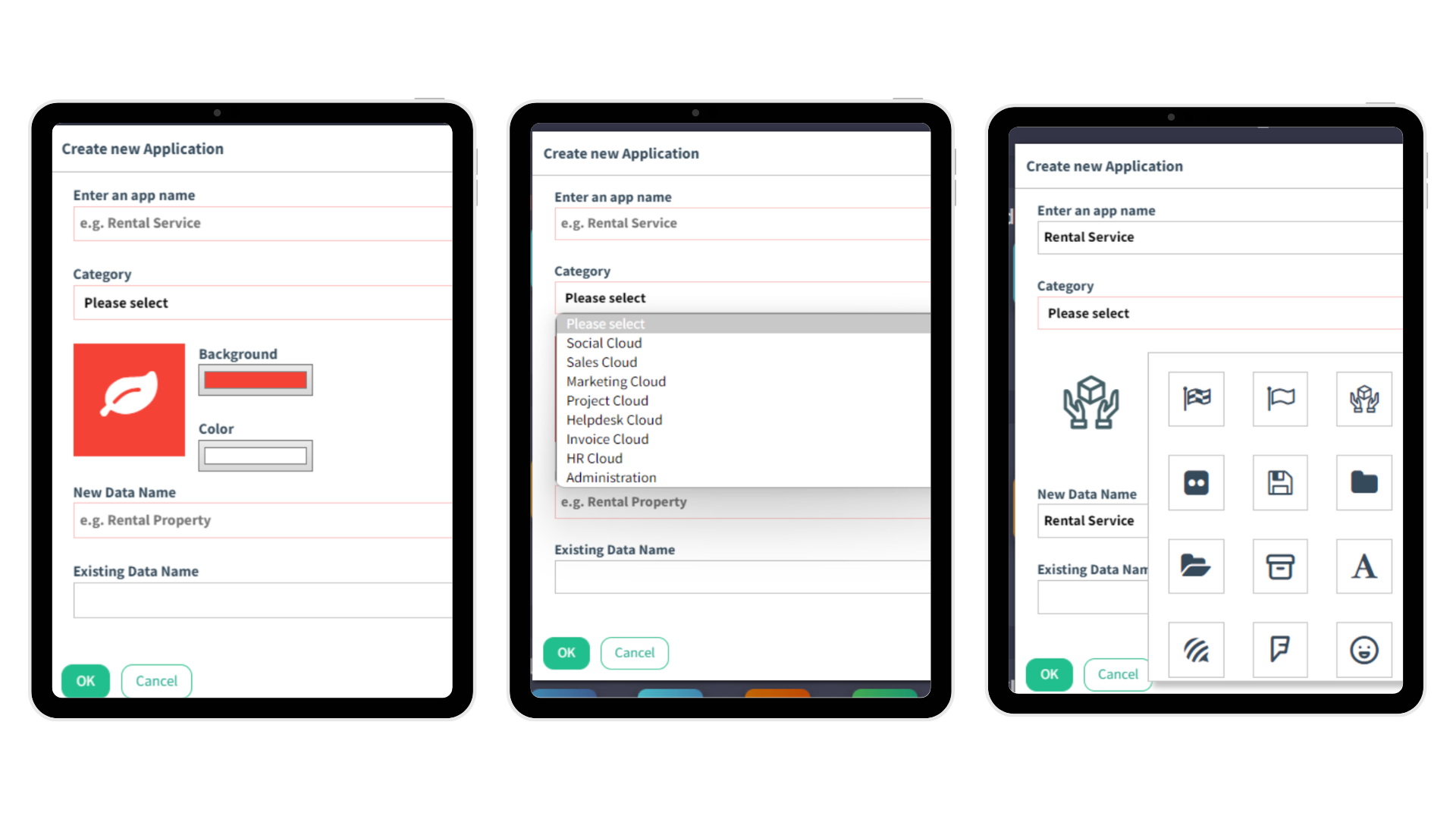What are the advantages of low code compared to no code?
Bigger dreams are possible with low code
22 April 2024 , Unser Blog
Nowadays, every company, even those not so good with technology, needs their customized tools for customers or employees. Bad news one size does not fits all for those dream bigger. Many compnies They often use No-code platforms for a quick fix. But are these platforms really that great, and what kind of problems might you run into?
Enter CloudOffix, the world's premier low-code total experience platform!

What exactly is no-code, and how does it benefit businesses?
Imagine no-code development as akin to crafting with a Lego set. Initially, you start with a vision in mind, arranging colorful blocks to bring that vision to life. However, as you progress, you may find that the standard Lego blocks don't fully match your requirements. Instead of being able to seamlessly adapt the Lego blocks to suit your needs, you might find yourself incorporating additional materials like paper or cardboard to achieve the desired look and functionality.
Despite your efforts, you end up with a mishmash of different materials that don't quite deliver the quality outcome you had envisioned. Similarly, in the realm of no-code development, when you can't find the exact tools or features you need within a single platform, you might resort to piecing together various tools and platforms. But this patchwork approach can sometimes result in a disjointed or less-than-ideal final product.
This is the point where no-code tools fall short, and you start to look for supplementary solutions to fill the gaps and you end up by using many different tools.
In a lego set, you're limited by the fixed shapes. You can't reshape the blocks themselves, but you can only create various forms by arranging them.
No-code platforms are advantageous for developers seeking to streamline their workflow by minimizing the need for extensive coding. However, while they offer convenience, they also come with inherent limitations.
Despite their user-friendly interfaces, the functionality of no-code services is usually constrained, leaving developers grappling with the reality that certain features critical to their projects may not be readily available within these platforms. This limitation prevents them from implementing innovative business ideas that require specialized functionalities beyond the scope of standard features offered by no-code services. They will be unable to fully tailor their creations to meet the unique demands of their projects.
Indeed, the popular options in the realm of no-code development, such as Creatio, Shopify, Mailchimp, and Wix, typically provide pre-packaged solutions designed to cater to a broad audience. While these solutions offer convenience and speed, they often come with trade-offs in terms of customization.
While no-code platforms offer an accessible entry point into development for many, they present a great challenge for those seeking flexibility and customization in their solutions.
Here enters low code through the door!
Low-code development arises when no-code solutions are inadequate, and traditional custom coding becomes overly complex.
Gartner predicts that by 2024, over 65% of application development will take place within low-code platforms. This statistic begs the question: What draws developers to low-code?
Moving forward, let's delve into the concept of low-code development.
Now, let's move on to low-code development. What is low-code development?
Low-code platforms, as the name suggests, enable individuals to develop applications with minimal traditional programming knowledge. Instead, they leverage a rich repository of pre-designed templates and components, making the development process highly accessible and efficient.
This paradigm shift in development methodology has garnered widespread adoption among organizations that demand rapid deployment of business solutions on a grand scale. The appeal lies in the democratization of software development, as individuals from diverse backgrounds can participate in creating sophisticated applications without the need for extensive coding expertise.
Low-code development accelerates the product release cycle.
By streamlining the development process and eliminating the need for intricate coding, low-code platforms empower teams to swiftly iterate and deploy applications, thus gaining a competitive edge in the market. This rapid time-to-market not only satisfies customer demands but also enhances the organization's agility in responding to evolving business needs.
Low-code development offers a compelling return on investment (ROI). By reducing the time and resources required for application development, organizations can allocate their resources more efficiently, maximizing profitability. Additionally, the low barrier to entry enables smaller businesses and startups to enter the market with innovative solutions, leveling the playing field and fostering healthy competition.
In addition to speed and cost-effectiveness, applications developed through low-code platforms exhibit remarkable scalability. As business requirements evolve and user bases expand, these low-code platforms can seamlessly adapt and grow without significant redevelopment efforts. This scalability ensures that the organization's technological infrastructure remains agile and responsive to changing market dynamics.
Low-code development offers unparalleled speed, scalability, and integration capabilities.
Discover the power of CloudOffix App, your gateway to seamless low-code development.
To get to the bottom of this, we've prepared the key advantages of low-code platforms. Ready?
So the benefits are quite obvious. The main three advantages of low-code development are:
Efficiency and Time Savings: Low-code development significantly reduces the time and effort required to create applications compared to traditional development methods. It streamlines the development process, enabling faster delivery of cross-platform solutions.
Ease of Integration and Deployment:Low-code platforms often offer seamless integration with external services and tools, facilitating project management and quality assurance processes. Additionally, they allow for easy and quick deployment, enabling swift bug fixes or rollbacks to previous versions.
Unlimited Functionality and Customization:Unlike restrictive no-code platforms or the potential chaos of custom code development, low-code platforms offer a balance. They provide the flexibility to implement complex business ideas and customize applications to meet specific requirements without being limited by pre-set functionalities.
Compared to both no-code development and custom development, low-code development ensures that customers receive precisely what they desire in a remarkably short timeframe and at a highly economical cost. With low-code solutions, there's a significant boost in variability and efficiency. However, this does come with a trade-off: the investment of time and resources.
Ultimately, the choice between these development approaches depends on individual needs. If the priority is a swift delivery of a basic application within tight deadlines, no-code development presents a viable option, saving both time and money. However, for businesses with ambitious plans heavily reliant on the application's future, investing in a fully customizable low-code platform offers the versatility and scalability necessary to bring those visions to fruition.
“Low-code development ensures that customers receive precisely what they desire in a remarkably short timeframe and at a highly economical cost, offering a significant boost in variability and efficiency."
In a world where innovation knows no bounds and dreams shape the future, one philosophy stands out: "Dream Big, Code Low."
It's all about daring to imagine to the fullest!
A no-code approach helps you get closer to your dreams without wasting time on custom coding. Low code allows you to dream bigger.
Join us in shaping the future, where aspirations meet efficiency.
Dream Big, Code Low. The future starts here.
Blog Forms
Latest Blog Posts
We encourage you to follow our blog posts.
